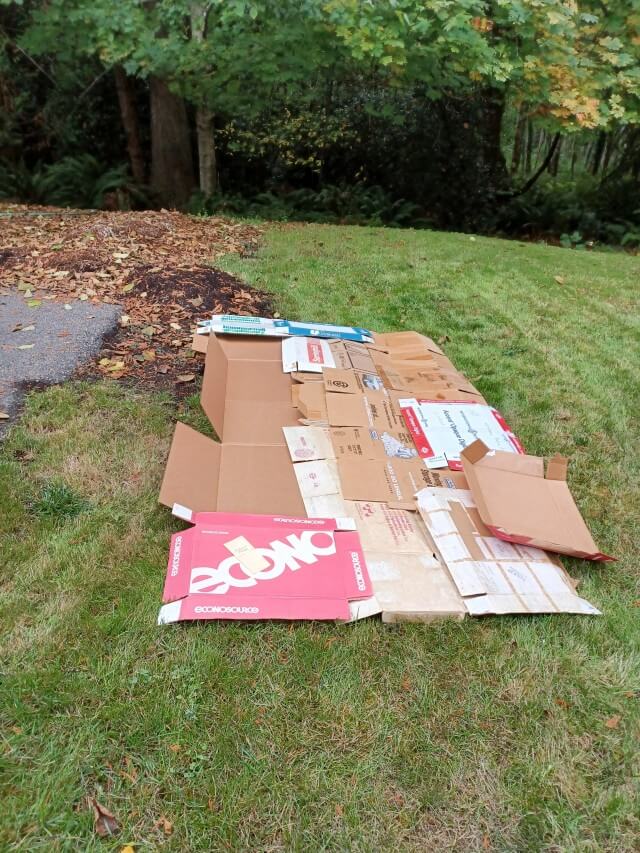Spring isn't the only time to get busy in the garden. One gardener has shown how they start cultivating new flower beds in fall by using the no-dig method.
Posting to Tumblr, the gardener shared that their ideal time to start a new flower bed is in the colder months when temperatures are around 45 degrees Fahrenheit. They just need a little cardboard to get started.

The post shows big sheets of cardboard laid out on the ground, which the gardener first tops with "nitrogen-rich compostable matter": grass clippings. Then they add "carbon-rich matter": wood chips. They keep layering the materials until there is a thick covering.
All that is left to do then is leave the bed over winter. The mulch will spend those months decomposing, killing the grass and weeds underneath and leaving the soil fertile and loose. In the spring, it will be ready for planting.
"Now is the easiest time of year to start a new garden bed," the user wrote. "If you want to meet organic standards, then make sure any cardboard or paper is non-glossy and black and white."
No-dig gardening is an effective way to improve your garden's soil health while also making the gardening itself extremely low-effort.
Digging has long been one of the prototypical gardening activities, but studies have shown that it can actually damage the soil's structure by loosening the natural drainage dug out by worms, releasing carbon that was trapped in the soil, and disrupting fungal networks.
No-digging, on the other hand, leaves the existing soil structure intact. A top layer of organic matter then lets nutrients seep into the ground, enhancing the existing ecosystem.
This means less manual labor for gardeners and also reduces the need for fertilizers (which have been shown to confuse pollinating insects like bees, leading to reduced pollination). These benefits can be supercharged if native plants are incorporated into landscaping efforts.
"It worked very well. There were a few weeds (because there always will be) but I think I spent less than half an hour on it all year," the OP added in an update.
Another chimed in with some additional advice for putting off unwelcome visitors to your new beds.
"Just a heads up that this technique will not kill perennial weeds unless you have the resources to do a super thick layer. … I've been doing this in my garden, and I still struggle with brambles, cranes bill geranium, bindweed, docks, and English ivy coming through," they cautioned. "Sheet mulching straight over the intact weeds and roots will weaken them though, so if you can stay on top of plucking them out, you can slowly win the battle."
Join our free newsletter for easy tips to save more, waste less, and help yourself while helping the planet.









